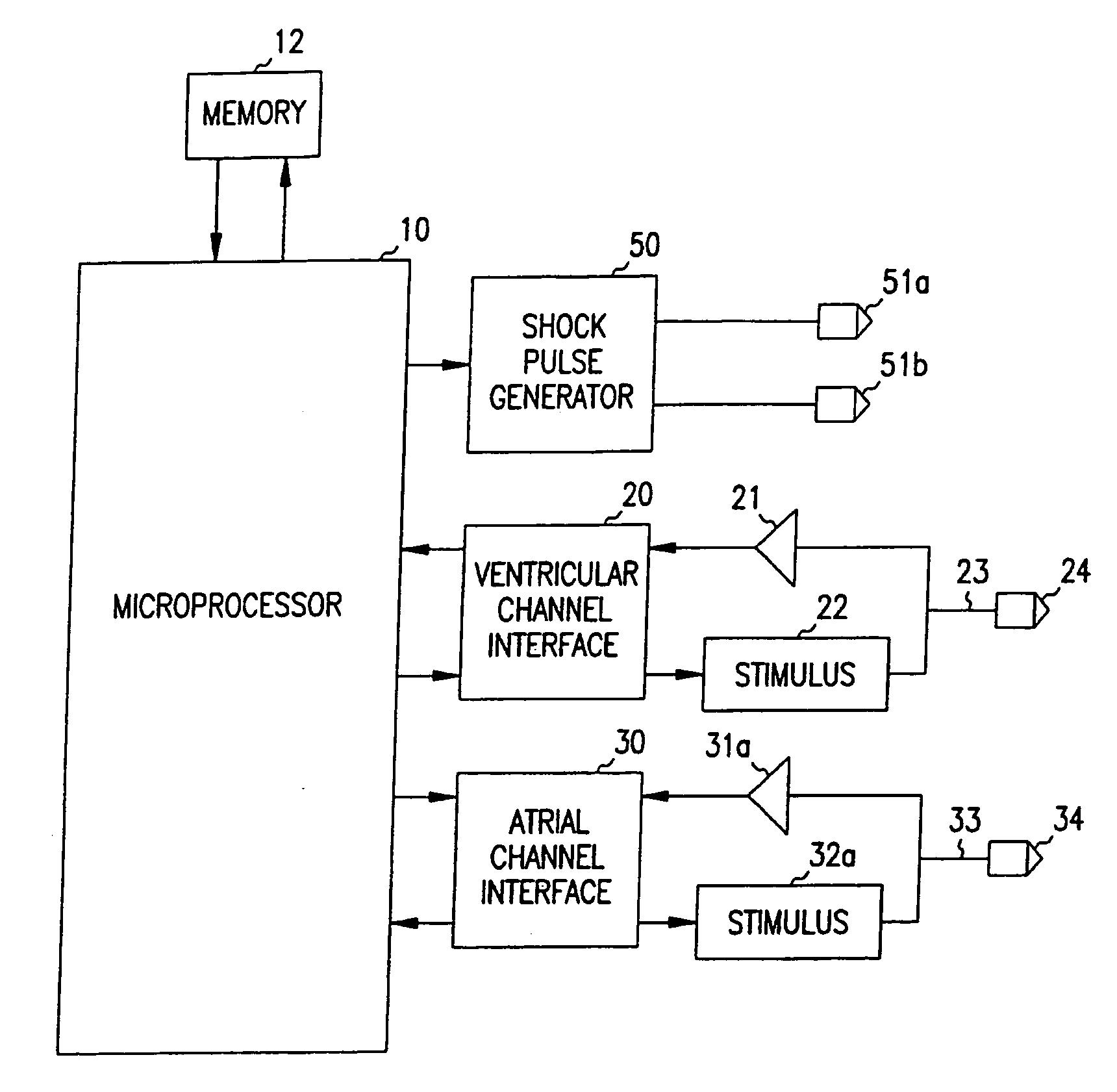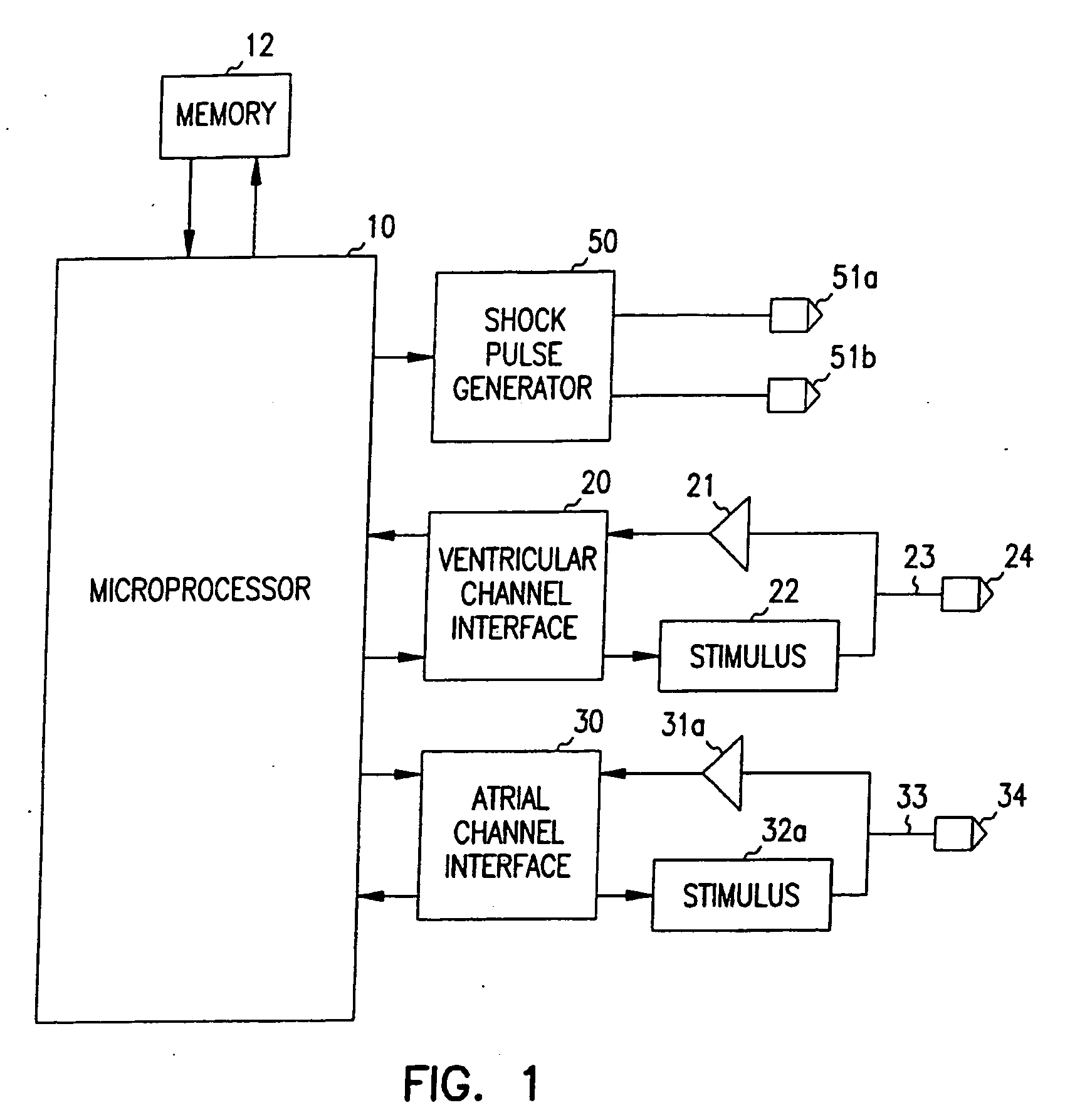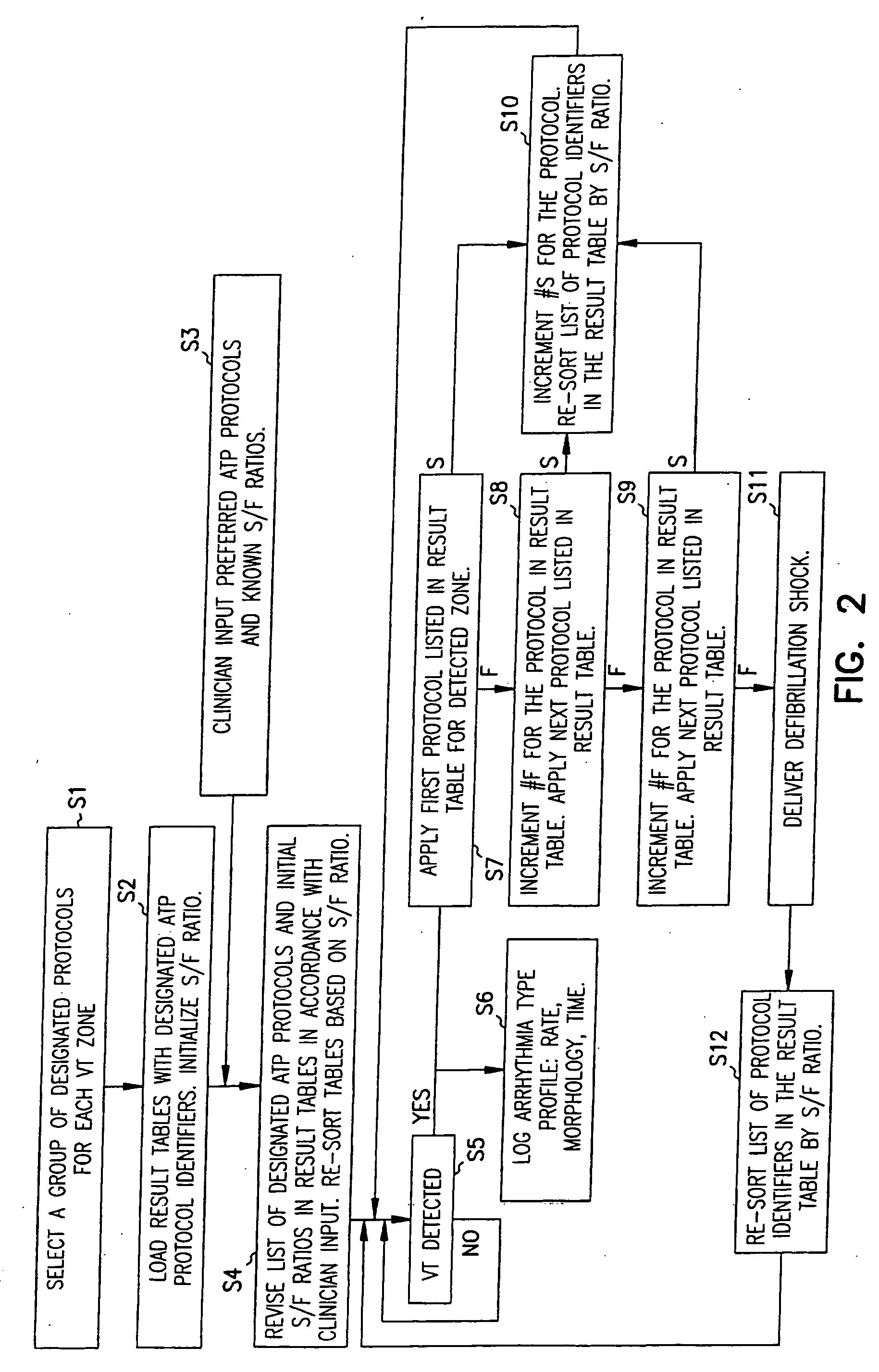Adapative anti-tachycardia therapy apparatus and method
a technology of pacing therapy and apparatus, which is applied in the field of anti-tachycardia pacing therapy methods and systems, can solve the problems of sudden cardiac death, circulatory arrest, rapid and irregular contraction of the ventricles out of electromechanical synchrony with the atria,
- Summary
- Abstract
- Description
- Claims
- Application Information
AI Technical Summary
Benefits of technology
Problems solved by technology
Method used
Image
Examples
Embodiment Construction
[0012] In accordance with the invention, a cardiac rhythm management device having ATP capability is programmed with a library of pacing protocols available for delivery by the device. In a microprocessor-based device, the output of pacing pulses is controlled by a pacing routine that implements a pacing protocol as defined by various parameters. Pacing protocols for ATP therapy can generally be divided into two classes: those that deliver one or more pulses in timed relation to detected depolarizations and those that deliver a continuous pulse train for a specified time. Both types of pacing protocols attempt to reset or capture the reentrant depolarization wave front causing the tachycardia with competitive pacing pulses. Protocols of the first group may vary according to parameters that define the number of pulses delivered and the particular timing employed. Protocols of the second group include so-called burst pacing in which a short train of pulses is delivered for a specified...
PUM
 Login to View More
Login to View More Abstract
Description
Claims
Application Information
 Login to View More
Login to View More - R&D
- Intellectual Property
- Life Sciences
- Materials
- Tech Scout
- Unparalleled Data Quality
- Higher Quality Content
- 60% Fewer Hallucinations
Browse by: Latest US Patents, China's latest patents, Technical Efficacy Thesaurus, Application Domain, Technology Topic, Popular Technical Reports.
© 2025 PatSnap. All rights reserved.Legal|Privacy policy|Modern Slavery Act Transparency Statement|Sitemap|About US| Contact US: help@patsnap.com



